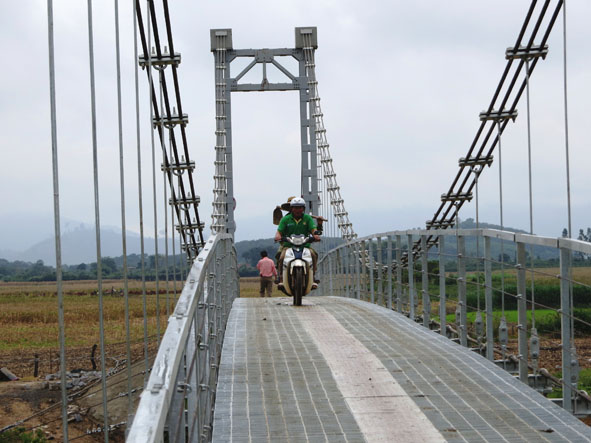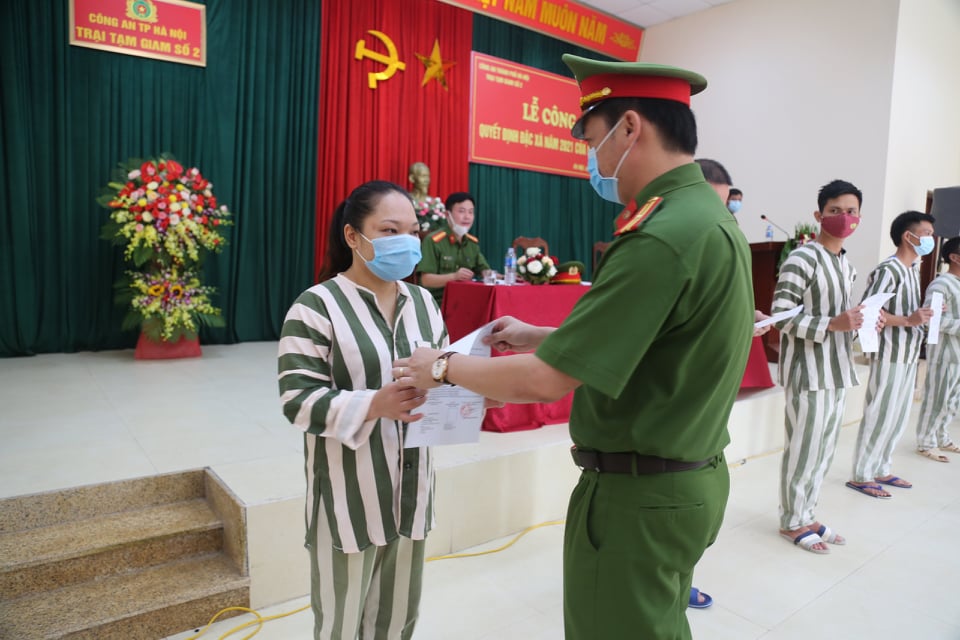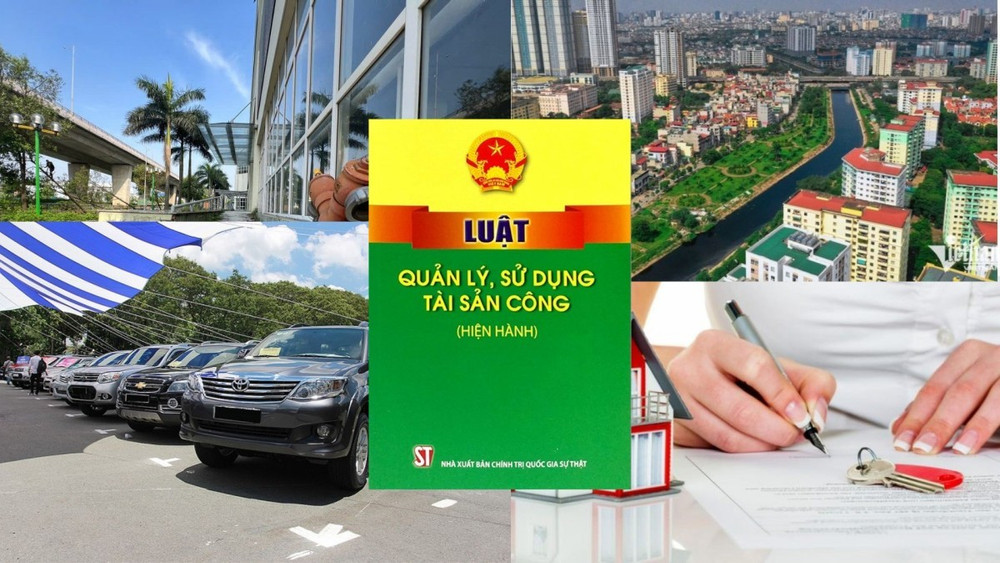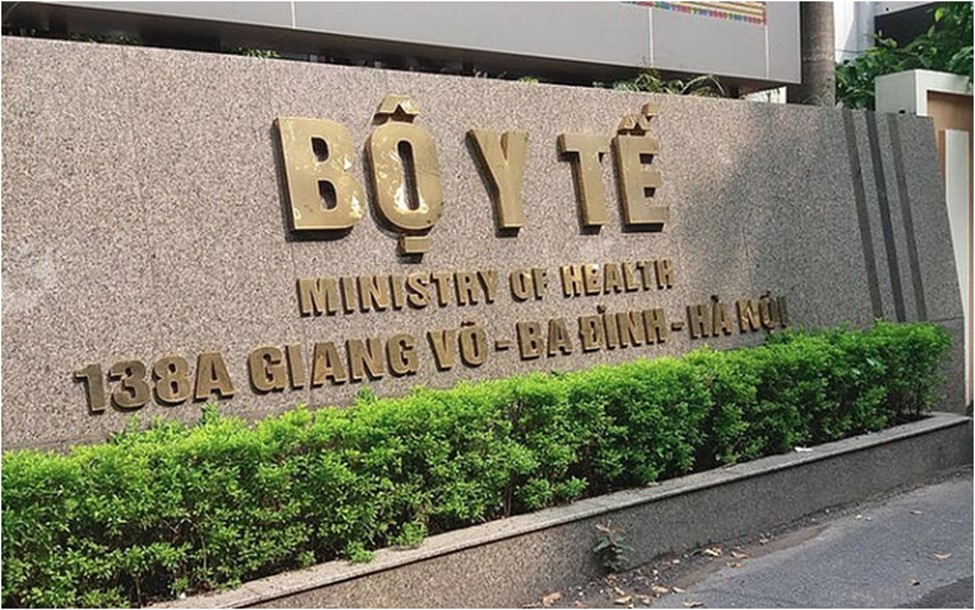Vietnam: 05 general principles for designing the structure of pedestrian suspension bridges
Recently, the Ministry of Transport of Vietnam issued Circular 11/2014/TT-BGTVT providing guidelines for the design, construction, and acceptance of pedestrian suspension bridges.

Vietnam: 05 general principles for designing the structure of pedestrian suspension bridges (Illustration)
Circular 11/2014/TT-BGTVT prescribes 05 general principles for designing the structure of pedestrian suspension bridges in Vietnam. To be specific:
-
It is necessary to sufficiently investigate and collect survey data such as topography, geology, climate, hydrology, load demand, physical and mechanical properties of materials, etc., according to current standards before proceeding with the design work.
-
The structures and prefabricated components (including mechanical parts such as turnbuckles, cable clips, rings connecting cables to suspension ropes or to bridge deck structures...), and foundations of the suspension bridge for livelihoods are calculated according to the limiting states specified in Standard 22TCN 272-05.
- Strength limit state: Limiting state due to loss of load-bearing capacity or rendering the structure unusable. Calculations aim to ensure the necessary strength and stability of the structure to prevent phenomena such as overall shape instability, positional instability (anti-slip, anti-tipping, anti-rising...), homogenous failure, prevention of new failures (when the structure is subjected to overlapping loads), and prevention of failures under the simultaneous impact of force factors and detrimental environmental influences (corrosive environment, etc.).
-
- Serviceability limit state: Limiting state due to the structure no longer being able to be used normally. Calculations aim to prevent the formation of cracks in reinforced concrete structures or to limit the excessive or prolonged opening of such cracks, to prevent excessive displacement of structural components, especially the bridge tower and main girder (regarding deflection, rotation angle, vibration).- Special limit state is not considered for suspension bridges for livelihoods.
-
It is necessary to calculate the dynamic effects of wind on the suspension bridge for livelihoods when the ratio B/L < 1/25.
-
It is necessary to arrange anti-sway cables for the suspension bridge for livelihoods when the ratio B/L < 1/25.
-
Depending on the calculated demand for anti-sway stability, anti-sway cables need to be arranged. In simple cases, anti-sway cables can be simply round steel bars with a diameter of 8 to 12 mm (d = 8-12 mm) positioned below the bridge deck structure, tensioned, and anchored at the base of the tower. Better cases involve arranging 2 symmetrically curved steel cables horizontally on both upstream and downstream sides of the bridge and connecting to the end beams of the bridge deck system. The lowest elevation (at the anchoring position) of these 2 cables must be higher than the highest historical water level.
Details can be found at Circular 11/2014/TT-BGTVT effective from June 15, 2014.
Ty Na
- Number of deputy directors of departments in Vietnam in accordance with Decree 45/2025/ND-CP
- Cases ineligible for pardon in Vietnam in 2025
- Decree 50/2025 amending Decree 151/2017 on the management of public assets in Vietnam
- Circular 07/2025 amending Circular 02/2022 on the Law on Environmental Protection in Vietnam
- Adjustment to the organizational structure of the Ministry of Health of Vietnam: Certain agencies are no longer listed in the organizational structure
- Vietnam aims to welcome 22-23 million international tourists in Vietnam in 2025
-

- Number of deputy directors of departments in Vietnam ...
- 15:04, 05/03/2025
-

- Cases ineligible for pardon in Vietnam in 2025
- 14:43, 05/03/2025
-

- Decree 50/2025 amending Decree 151/2017 on the ...
- 12:00, 05/03/2025
-

- Circular 07/2025 amending Circular 02/2022 on ...
- 11:30, 05/03/2025
-

- Adjustment to the organizational structure of ...
- 10:34, 05/03/2025
-

- Notable new policies of Vietnam effective as of ...
- 16:26, 11/04/2025
-
.Medium.png)
- Notable documents of Vietnam in the previous week ...
- 16:21, 11/04/2025
-
.Medium.png)
- Notable documents of Vietnam in the previous week ...
- 16:11, 02/04/2025
-
.Medium.png)
- Notable new policies of Vietnam to be effective ...
- 16:04, 02/04/2025
-
.Medium.png)
- Notable new policies of Vietnam effective from ...
- 14:51, 21/03/2025
 Article table of contents
Article table of contents
